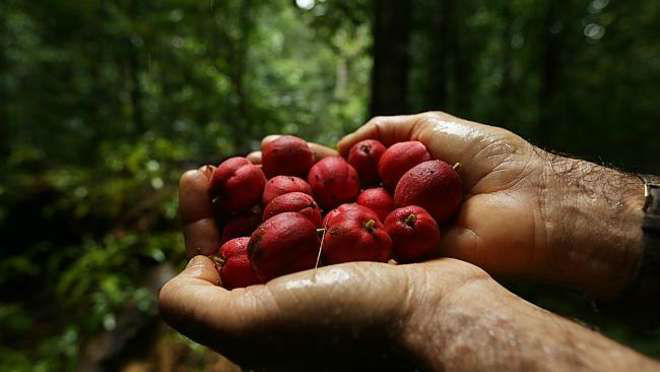
Cure For Cancer In The Outback: How A Rare Australian Plant May Hold The Key
For anyone interested in biology and evolution, Australia is truly a land of unending wonders. A recent story about the possible sighting of a species that was long thought to be extinct, the marsupial predator known as a thylacine is a case in point.
It is amazing to think about how much unique flora and fauna still exist there–and it is tragic to think about how much humans casually wiped out in their haste to conquer the continent.
However, we haven’t destroyed everything, at least not yet. Australia is the one place in the world where a newly discovered potential cure for cancer still grows.
Located in North Queensland, in the far northern reaches of Australia near the Great Barrier Reed and in a region that boasts 70 national parks, there grows a plant known as the blushwood berry, or Hylandia dockrillii. This berry contains a molecule that scientists are calling EBC-46, and researchers are rightfully excited about it.
In a lab setting, they have used the molecule to kill cancerous tumors in as little as seven days–other experiments showed cancer cells being killed off in as little as 48 hours.
And not only that, the trials have moved on from treating individual cells and tumors in petri dishes to treating melanoma cancers in lab animals, including horses, rats and dogs. According to the study’s researchers at the QIMR Berghofer Medical Research Institute, led by a Dr. Glen Boyle, these were animals that had been given a poor prognosis by veterinarians due to their advanced skin cancer, and were likely candidates for euthanasia.
Upon injecting EBC-46 into the cancerous cells on the animals, the tumors almost immediately began to turn dark purple, then black, and then proceed to fall off completely.
And the first attempt to use the EBC-46 molecule to treat a human may have saved a woman’s arm from amputation in a similar manner.
“In most cases the single injection treatment caused the loss of viability of cancer cells within four hours, and ultimately destroyed the tumors,” said Dr. Boyle.
And while testing on the substance is still in the pre-clinical trial phase, Dr Boyle is confident that he and his team are onto something new and promising.
Down the road future generations may be thanking not only Dr. Boyle, but also the Australian government for having the foresight to refrain from destroying all the natural beauty of that great nation.
Next time some gung-ho developer asks what’s wrong with bulldozing one more patch of natural land, keep the story of the blushwood berry in mind, and ask him if he’s a fan of cancer.
###
